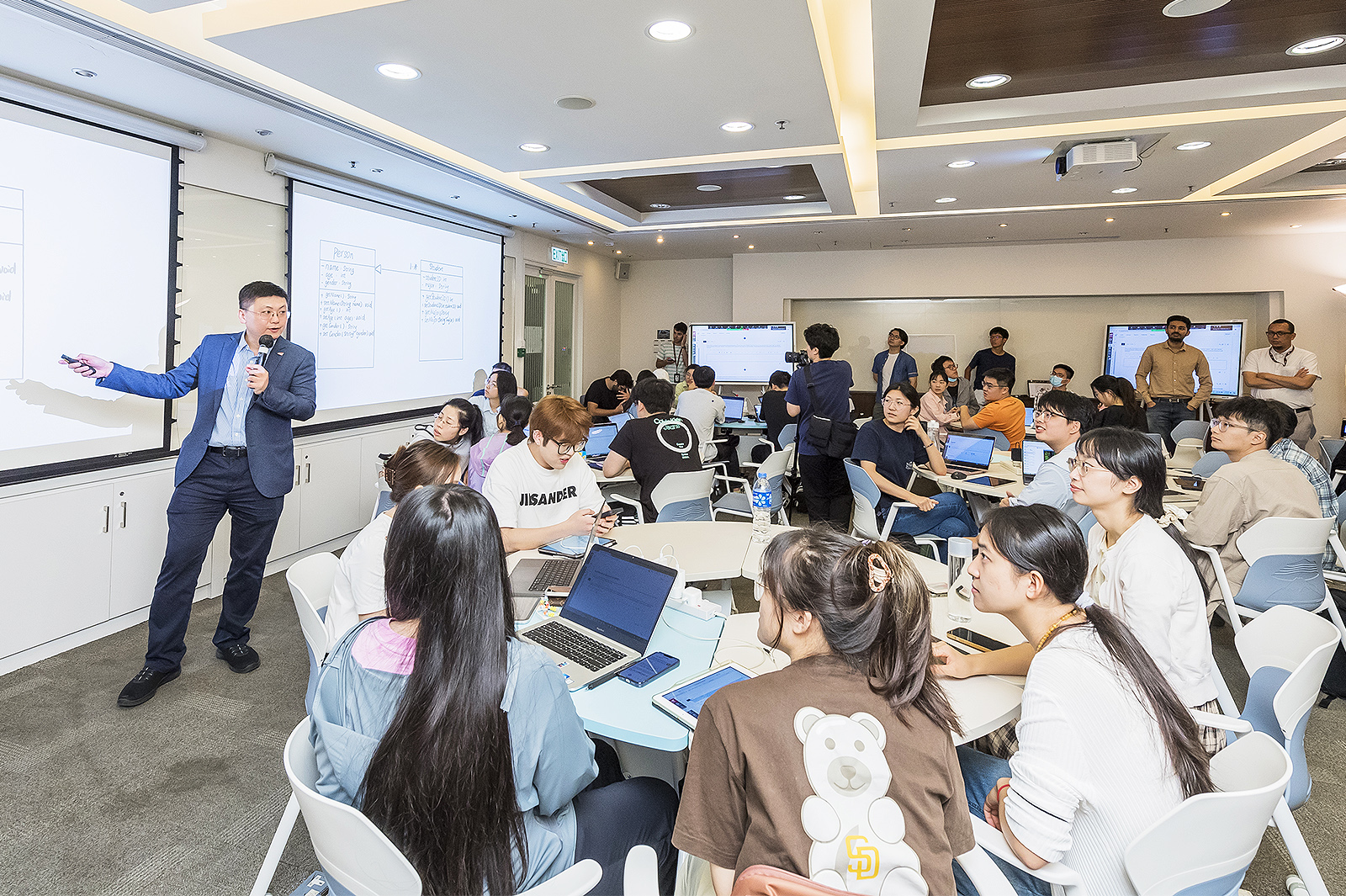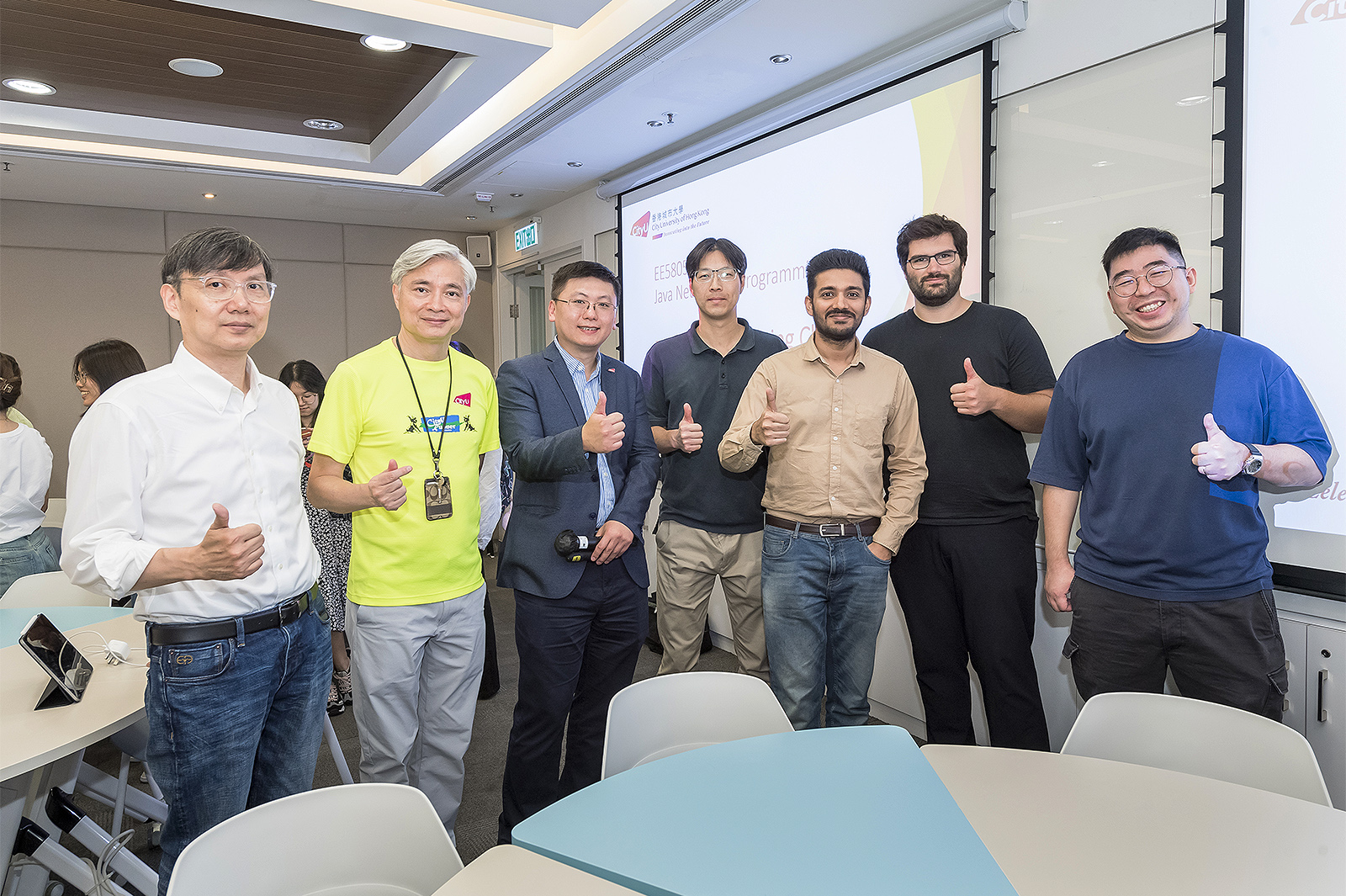CityUHK launches team-based learning class, providing an interactive and innovative educational environment

City University of Hong Kong (CityUHK) is committed to fostering an innovative and interactive educational environment, shifting its university courses from teaching-centric to learning-centric. Professor Ray Cheung Chak-chung, Associate Provost (Digital Learning), introduced the team-based learning approach during the summer semester in two pioneering university courses using this learning model, allowing students and faculty to experience it first-hand in a practical classroom setting. Participants in the classes have provided positive feedback on this learning approach.
Unlike typical university classes, CityUHK’s team-based learning class combines digital learning and is divided into several parts to allow students to take the initiative in learning. First, students assess their learning level and familiarity with the topic online. Next, they seek consensus with their peers through group discussions. The next stage involves in-class group projects, where the students apply their knowledge practically using real-life examples through discussion, questioning and expressing opinions. Finally, the teacher assesses the students’ understanding of the key points through interaction and sharing.

Professor Cheung was excited about the high efficiency of the pilot team-based learning class, since the outcome was better than expected. “Student engagement is very high. Their clear understanding of their roles during in-class group projects and their eagerness to share their ideas with their classmates during presentations reflect that this learning model encourages students to express their opinions more proactively,” he said.
“Team-based learning allows students to get to consensus and a common direction for a given problem or question, this can equip our students with the ability to negotiate and to communicate effectively with peers, preparing them for their careers,” he said.
He hopes that the two pilot classes in the summer semester will allow more CityUHK faculty to see the advantages of team-based learning classes. Ten classes in different schools and colleges will adopt team-based learning in September, he added. He expects the scale to be expanded next January.
“CityUHK’s ancillary facilities for team-based learning will continue to improve,” he said. “Last year, the University established a task force on digital learning composed of representatives from various colleges. We consistently collected feedback and learnt from our experience. We believe that with enhanced support and resources, our faculty and staff will strongly support team-based learning classes.”

Several professors and lecturers from CityUHK participated in the first team-based learning classes. Among them, Professor Condon Lau, from the Department of Physics, believed that the classroom atmosphere is ideal. He pointed out that many students may not fully concentrate during traditional lectures, and some might gradually lose interest due to a lack of understanding of the content. He hoped that the interactive team-based learning classes would enhance student engagement and make it easier for them to learn new material.
Professor Sai Kishore Ravi, from the School of Energy and Environment, noted that today’s students are no longer satisfied with receiving information passively. Instead, they prefer to discuss ideas and problem-solve in groups. He was impressed at how quickly the students absorbed new knowledge in class, applied the concepts to group projects, and proposed solutions to problems. Professor Ravi’s class was one of the pioneering team-based learning classes. He said he looked forward to applying the insights gained from the first classroom observations.
Dr Patrick Hung Siu-ying, a lecturer in the Department of Electrical Engineering, stated that this team-based learning is similar to real-life corporate work environments but more intensive. It allows students to learn a new concept and apply it within a very short time. He believed that team-based learning, along with digital education, will be a future teaching trend, and he expects most university classes to transition to this collaborative learning mode.
Many students said that team-based learning made them more engaged during class. Li Shiyu, who is pursuing a Master of Science in Electronic Information Engineering, found that group discussions significantly enhance learning efficiency. “Group discussions allow us to continuously learn new knowledge and apply what we’ve learned. When we have questions, we can directly ask the teaching assistants. This one-on-one or one-on-many group learning approach is highly beneficial for applying knowledge,” she said.
Yang Zhi, currently studying for a Master of Science in Multimedia Information Technology, noted that the classroom atmosphere was ideal and that efficiency and participation were significantly enhanced. “Compared to traditional lectures, the team-based learning model emphasises training our thought processes because this learning approach requires us to question certain concepts or propose feasible solutions to problems,” he explained.
Another Master of Science student in Multimedia Information Technology, Li Pei Ming, highlighted that the team-based learning model encourages students to proactively participate in class, since in addition to exchanging opinions with group members, students actively seek help from artificial intelligence tools, professors or teaching assistants when they have questions.
“In group projects during class, there are time constraints and goals. As a result, each team member does their best to avoid burdening other team members. Traditional classes mostly involve individual learning, with specific assignments completed after class. However, team-based learning is a collective approach, motivating everyone to keep up and be more proactive,” he said.
